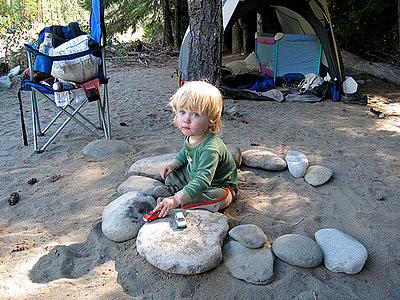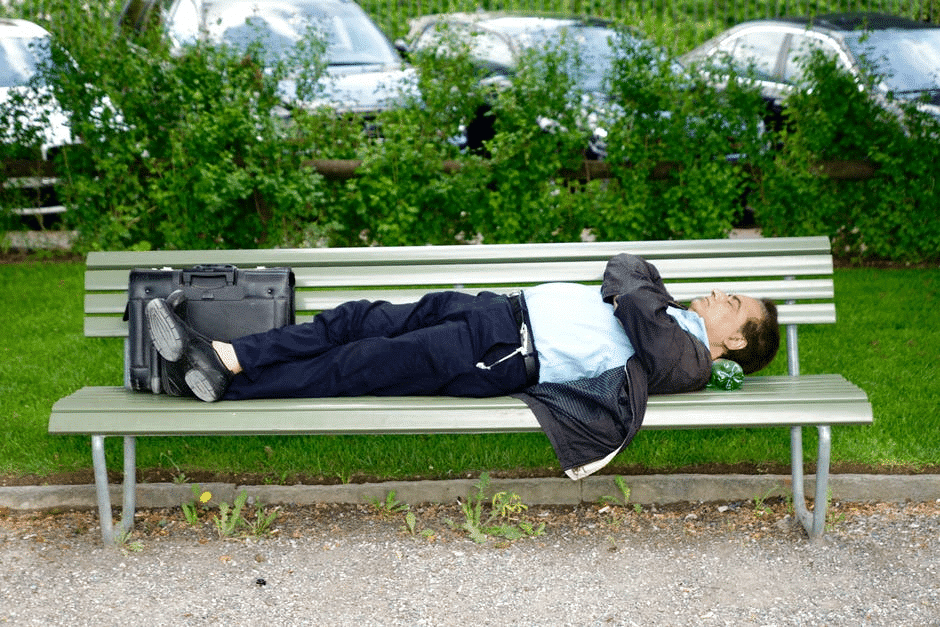As families develop and grow, the norms of parental roles are changing. Over time, households have become more equitable as both parents spend more time at home.
For some, this means becoming full-time stay-at-home dads. In a study done by the Pew Research Center, an estimated 2 million people were stay-at-home fathers in 2014. As time has progressed, these numbers have only increased.
While some things have contributed to these changes, most of it has to do with personal preference. Also, some dads aren’t solely staying at home. Some are taking on part-time positions along with their place in the home.
Of the reasons that have been studied, the most common contributing factors include health emergencies, financial reasons, and unemployment. According to the U.S. Census reports, there are roughly about 7 million dads as primary caregivers.
The Numbers Prove It: Dads Are Staying Home
While the number of stay-at-home dads continues to increase, there are flaws in the research. For one thing, researchers have conflicting opinions on the definition of a stay-at-home dad.
Some believe that it should include fathers who may have part-time positions and their role as caretakers. Others discount this and only refer to stay-at-home fathers as caretakers whose sole purpose is to take care of their children.
The most promising of these were concluded by the Pew Research Center in 2014. At the time, researchers concluded that there were at least 2 million stay-at-home fathers in the U.S.
This was twice the number they recorded in 1989, but many have criticized the study for including fathers in transition after unemployment. Either way, the numbers still show that there’s a growing number of fathers staying at home.
The 2019 U.S. census report under these terms reported 191,000 stay-at-home dads. The number significantly decreases when counting fathers who only devote their time to their children without including any part-time positions. Even so, these are also the most inaccurate findings.
In conclusion, the most widely agreed-upon number of stay-at-home dads in the U.S. is at least 1.4 million. This includes fathers who take on part-time positions outside of primary caregivers.
Even so, it’s believed to be much higher, but further research needs to be conducted to make a definitive statement. In other words, the number of stay-at-home fathers is an ongoing discussion and will likely increase with time.
Why Are Dads Staying At Home?
Most research shows that fathers stay home because they simply want to. More than likely, this is due to large families that need more caregivers in the home.
Also, some families have no choice but to have a dad in a primary caregiving role. For example, same-sex parents may have one person devoted to caregiving.
Medical Reasons
There have been reported reasons for dad becoming the primary caregiver. Back in 2014, the Pew Research Center found that of the stay-at-home dads they studied, most of them did so because of medical reasons. For example, if their partner was diagnosed with a severe illness that required another caregiver for the children and their spouse.
Financial Reasons
Employment and financial reasons have something to do with the rise of stay-at-home dads. The father may choose to become the primary caregiver for the other to focus on household income to support their partner. On top of that, their partner may need extra support that they can’t give with their current position.
These two reasons have led to a common misconception that fathers stay home because of the global pandemic. In reality, these numbers have increased since the Great Recession in 2010. Following many job losses, dads began taking on larger caregiving responsibilities.
While the pandemic has impacted working women, it has also affected men. According to CNBC, about 2 million women left the workforce in February 2020, and around 1.6 million men have become unemployed. Not much has changed aside from an increased need for caregivers as a whole.
Back in 2016, 24% of dads said they chose to stay at home because they wanted to, not because of a sudden change in their environment. In that same year, 78% of moms said the same thing, a significant decrease from Pew’s statistics in 1989. What this means is that stay-at-home dads were rising while mothers were going to work.
In 2017, it was discovered that 41% of moms became the primary source of income for their families. For this reason, their partners are taking on fewer jobs or forgoing any career whatsoever. To avoid the expensive cost of child care, many stay-at-home dads are taking advantage of the benefits of being primary caregivers.
Essentially, dads were beginning to stay at home well over a decade ago. As social norms have shifted and women have started taking on bigger career opportunities, the number of stay-at-home dads has increased.
While the global pandemic has helped this number grow, most of it has to do with unemployment. Granted, stay-at-home dads are still uncommon. They are just beginning to rise with time.
Challenges
Public Perceptions
Unfortunately, some people haven’t accepted stay-at-home dads. Hurtful stigmas incorrectly label the position as “anti-masculine” or “improper,” but these notions are false. These negative stereotypes are very real, discouraging, and harmful.
Wrongful stereotypes may also claim that stay-at-home dads are lazy and lack work ethic. These can invoke shame, insecurity, and anxiety in the whole family. But, it should be emphasized that these are false accusations. It invalidates the amount of work that goes into being a primary caregiver.
Loneliness
Similar to feelings stay-at-home mothers experience, dads can also go through periods of loneliness. On top of that, there aren’t as many stay-at-home dads for mutual support. Helping your children can be a little more complicated when most child care classes are designed for mothers.
While many stay-at-home dads attend connection groups, it can be lonesome when you’re the only father in the room. For all these reasons, being a stay-at-home dad can be isolating. If it’s possible, find resources that are designed for stay-at-home dads. Otherwise, try attending co-ed groups that are inclusive to all parents.
Mental Health Obstacles
Parenting is a challenging job, period. Like stay-at-home moms, mental health obstacles can occur when there’s not enough support for stay-at-home dads. Between the number of stigmas, isolation, and financial obstacles, many factors can lead to depression and/or anxiety.
Trying to keep your family calm during an emergency can seem like an impossible task. If you’re a stay-at-home father that had to become a primary caregiver for tragic reasons, this can be especially difficult. If you’ve been struggling with your mental health since becoming a stay-at-home dad, it’s essential to reach out for help.
Absence of Support
Unfortunately, the same stigmas directed at stay-at-home can sometimes come from support systems. Different viewpoints, family histories, and generations may provide unsolicited input on your parenting choices. But, it’s important to remember that they’re often basing these judgments on their own experiences, not yours.
In general, there may not be as much support readily available for stay-at-home dads. Focus on your family and the choices you can control. If your family members cannot accept your familial responsibilities, setting boundaries is essential. Others don’t have to accept it. As long as your family is comfortable with the decisions you make, that’s all that matters.
Financial Barriers
Just like the roles were reversed, finances may be a struggle if only one person makes all the income. It may be necessary to take on a part-time position during difficult times, and you’ll have to work as a team to take care of your family.
Nevertheless, it’s essential to support each other, no matter what you face. You can overcome financial obstacles, but you just have to work together. If you decide that your spouse will be the primary source of income, prepare a plan for times of emergency.
Benefits
More Opportunities to Bond With Children
Research has proven that children are happier when parents are inequitable roles. Obviously, stay-at-home moms are just as capable of accomplishing the exact same tasks.
The same study discovered that it improved parental teamwork and family quality time. Overall, being at home can offer more opportunities to bond with your children and strengthen family relationships.
While their mother is at work, it gives them time to be caretakers, leaders, and role models. Plan fun activities with them, cook their meals and have deep conversations.
Set aside quality time outside of caretaking while knowing when necessary to step into that role. Be consistent and devote yourself to the role of caregiver.
Improves Relationship with Partner
There’s a lot of evidence showing improvements in marriages when partners are inequitable. This is because mothers feel less pressure to “parent” their children before going to work.
Instead, your partner can rely on you when it’s necessary, allowing them to nurture your children when they get home. This isn’t to say that they can’t help you with caregiving. It just promotes an environment of equity.
Granted, every family is different. These dynamics won’t apply to everyone, but there’s a chance that being a stay-at-home dad will help you appreciate mothers’ role in their children.
Research has shown that partners connect with each other a lot better. When partners cultivate a culture of helping each other, it improves relationships.
Reject Societal Standards
One of the most rewarding parts of being a stay-at-home dad is the ability to redefine social norms. As mentioned above, it doesn’t matter what others think, just as long as your children feel safe and happy. If you and your partner decide that swapping the role of caregiver is the best thing for your family, that’s what’s important.
Embrace a progressive family dynamic by supporting your partner and your children. Allow your partner to embrace their career while you enjoy the job of being a professional father.
Plus, for blended families, the chance to bond with your stepchildren may be a positive step forward in your familial relationships. What’s better than that?
Tips for Stay-At-Home Dads
Be Communicative
Always communicate with your partner and check in with each other. When you decide to become a stay-at-home dad, talk to your partner immediately.
Have a deep discussion setting expectations and responsibilities right away. Having open and honest communication will prevent conflict later.
Spend Time With Your Children
Obviously, one of the most significant parts of being a stay-at-home dad is the ability to spend quality time with your children. It can be fun to plan engaging educational, interactive, and creative activities. Treasure these moments together and use them as an opportunity to form a strong relationship.
Create a Consistent Routine
While there’s a time and place for fun activities, you’ll need to establish a consistent routine that your children follow every day. Create time blocks for eating, bedtime, and homework.
This can help you stay organized and set expectations for your children. Make sure to stick with your schedule and communicate with your children if anything changes.
Take Care of Yourself
Parenting can be challenging, exhausting, and isolating. Remember, being a parent doesn’t have to define your entire life. During moments of stress or low mental health, take some time for yourself.
Go for a walk, read a book, or practice relaxation exercises. If it’s a situation that requires a mental health professional, never hesitate to speak with a licensed counselor.
Ask for Help
Parenting is a team effort, no matter who’s the primary caregiver. It can seem tempting to try and handle everything by yourself, but that’s impossible.
If you’ve had a bad day, please reach out to a trusted and accepting loved one. This can be your partner, a family member, or a friend. Never be ashamed if you need to let someone else take over another household duty while caring for your children.






